I want to use an AsyncTask in my app, but I am having trouble finding a code snippet with a simple explanation of how things work. I just want something to help me get back up to speed quickly without having to wade through the documentation or lots of Q&As again.
Asked
Active
Viewed 5.1k times
47
Peter Mortensen
- 30,738
- 21
- 105
- 131
Suragch
- 484,302
- 314
- 1,365
- 1,393
-
3What is wrong with http://developer.android.com/reference/android/os/AsyncTask.html – Selvin Sep 03 '14 at 15:17
-
2also [Using AsyncTask](http://stackoverflow.com/questions/18898039/using-asynctask/18898105#18898105) – codeMagic Sep 03 '14 at 15:18
-
2It was actually better in it's original form. Now, it looks too broad for SO. Your wanting to share and help is appreciated. [But even self-answer questions should adhere to SO guidelines](http://meta.stackoverflow.com/questions/261616/self-answer-questions-being-too-broad). The original Q&A was good just a dupe and there is nothing wrong with that. [See this meta post](http://meta.stackoverflow.com/questions/265736/should-i-delete-my-question-if-it-is-marked-as-a-duplicate) – codeMagic Sep 06 '14 at 14:41
1 Answers
226
AsyncTask is one of the easiest ways to implement parallelism in Android without having to deal with more complex methods like Threads. Though it offers a basic level of parallelism with the UI thread, it should not be used for longer operations (of, say, not more than 2 seconds).
AsyncTask has four methods
onPreExecute()doInBackground()onProgressUpdate()onPostExecute()
where doInBackground() is the most important as it is where background computations are performed.
Code:
Here is a skeletal code outline with explanations:
public class AsyncTaskTestActivity extends Activity {
@Override
public void onCreate(Bundle savedInstanceState) {
super.onCreate(savedInstanceState);
setContentView(R.layout.main);
// This starts the AsyncTask
// Doesn't need to be in onCreate()
new MyTask().execute("my string parameter");
}
// Here is the AsyncTask class:
//
// AsyncTask<Params, Progress, Result>.
// Params – the type (Object/primitive) you pass to the AsyncTask from .execute()
// Progress – the type that gets passed to onProgressUpdate()
// Result – the type returns from doInBackground()
// Any of them can be String, Integer, Void, etc.
private class MyTask extends AsyncTask<String, Integer, String> {
// Runs in UI before background thread is called
@Override
protected void onPreExecute() {
super.onPreExecute();
// Do something like display a progress bar
}
// This is run in a background thread
@Override
protected String doInBackground(String... params) {
// get the string from params, which is an array
String myString = params[0];
// Do something that takes a long time, for example:
for (int i = 0; i <= 100; i++) {
// Do things
// Call this to update your progress
publishProgress(i);
}
return "this string is passed to onPostExecute";
}
// This is called from background thread but runs in UI
@Override
protected void onProgressUpdate(Integer... values) {
super.onProgressUpdate(values);
// Do things like update the progress bar
}
// This runs in UI when background thread finishes
@Override
protected void onPostExecute(String result) {
super.onPostExecute(result);
// Do things like hide the progress bar or change a TextView
}
}
}
Flow Diagram:
Here is a diagram to help explain where all the parameters and types are going:
Other helpful links:
- What arguments are passed into AsyncTask<arg1, arg2, arg3>?
- Slidenerd Android AsyncTask Tutorial: Android Tutorial For Beginners
- Understanding AsyncTask – Once and Forever
- Dealing with AsyncTask and Screen Orientation
- How to pass multiple parameters to AsynkTask
- how to pass in two different data types to AsyncTask, Android
Suragch
- 484,302
- 314
- 1,365
- 1,393
-
very cool man, the documentation as usually is not there I've been using without really knowing why I had do it that way. – becker Sep 16 '17 at 19:06
-
2Visualizing the data flow to constructor will make the image more beautiful! – Mohammed H Jan 19 '18 at 06:08
